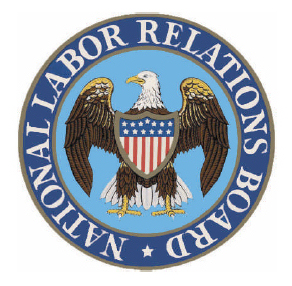Judgment
The Supreme Court found that the DC Circuit had legitimately identified two corporations as a single employer given that they had a "very substantial qualitative degree of centralized control of labor", but that further determination of the relevant bargaining unit should have been remitted to the NLRB.
Stating that it was applying the criteria recognized by this Court in Radio and Television Broadcast Technicians Local Union 1264 v. Broadcast Service , 380 U.S. 255, 85 S.Ct. 876, 13 L.Ed.2d 789 (1965),3 the Court of Appeals disagreed with the Board and decided that on the facts presented Kiewit and South Prairie were a single "employer." It reasoned that in addition to the "presence of a very substantial qualitative degree of centralized control of labor relations," the facts "evidence a substantial qualitative degree of interrelation of operations and common management one that we are satisfied would not be found in the arm's length relationship existing among unintegrated companies". 171 U.S.App.D.C. 102, 108, 109, 518 F.2d 1040, 1046, 1047 (1975). The Board's finding to the contrary was, therefore, in the view of the Court of Appeals "not warranted by the record." Id., at 109, 518 F.2d, at 1047.
The Court of Appeals was evidently of the view that since the Board dismissed the complaint it had necessarily decided that the employees of Kiewit and South Prairie would not constitute an appropriate bargaining unit under § 9. But while the Board's opinion referred to its cases in this area and included a finding that "the employees of each constitute a separate bargaining unit," 206 N.L.R.B. 562, 563 (1973), its brief discussion was set in the context of what it obviously considered was the dispositive issue, namely, whether the two firms were separate employers. We think a fair reading of its decision discloses that it did not address the "unit" question on the basis of any assumption, Arguendo, that it might have been wrong on the threshold "employer" issue. [1]
In foreclosing the Board from the opportunity to determine the appropriate bargaining unit under §9, the Court of Appeals did not give "due observance (to) the distribution of authority made by Congress as between its power to regulate commerce and the reviewing power which it has conferred upon the courts under Article III of the Constitution." FCC v. Pottsville Broadcasting Co. , [1940] USSC 15; 309 U.S. 134, 141[1940] USSC 15; 60 S.Ct. 437, 440[1940] USSC 15; 84 L.Ed. 656, 661 (1940).
The petitions for certiorari are accordingly granted, and that part of the judgment of the Court of Appeals which set aside the determination of the Board on the question of whether Kiewit and South Prairie were a single employer is affirmed. That part of the judgment which held that the two firms' employees constituted the appropriate bargaining unit for purposes of the Act, and which directed the Board to issue an enforcement order, is vacated, and the case is remanded to the Court of Appeals for proceedings consistent with this opinion.

The National Labor Relations Act of 1935 29 U.S.C. § 151–169 is a foundational statute of United States labor law which guarantees basic rights of private sector employees to organize into trade unions, engage in collective bargaining for better terms and conditions at work, and take collective action including strike if necessary. The act also created the National Labor Relations Board, which conducts elections that can expect employers to engage in collective bargaining with labor unions. The Act does not apply to workers who are covered by the Railway Labor Act, agricultural employees, domestic employees, supervisors, federal, state or local government workers, independent contractors and some close relatives of individual employers.
The duty of fair representation is incumbent upon U.S. labor unions that are the exclusive bargaining representative of workers in a particular group. It is the obligation to represent all employees fairly, in good faith, and without discrimination. Originally recognized by the United States Supreme Court in a series of cases in the mid-1940s involving racial discrimination by railway workers' unions covered by the Railway Labor Act, the duty of fair representation also applies to workers covered by the National Labor Relations Act and, depending on the terms of the statute, to public sector workers covered by state and local laws regulating labor relations.
The National Labor Relations Board, an agency within the United States government, was created in 1935 as part of the National Labor Relations Act. Among the NLRB's chief responsibilities is the holding of elections to permit employees to vote whether they wish to be represented by a particular labor union. Congress amended the Act in 1947 through the Taft–Hartley Act to give workers the ability to decertify an already recognized or certified union as well. This article describes, in a very summary manner, the procedures that the NLRB uses to hold such elections, as well as the circumstances in which a union may obtain the right to represent a group of employees without an election.
Card check is a method for employees to organize into a labor union in which a majority of employees in a bargaining unit sign authorization forms, or "cards", stating they wish to be represented by the union. Since the National Labor Relations Act (NLRA) became law in 1935, card check has been an alternative to the National Labor Relations Board's (NLRB) election process. Card check and election are both overseen by the National Labor Relations Board. The difference is that with card sign-up, employees sign authorization cards stating they want a union, the cards are submitted to the NLRB and if more than 50% of the employees submitted cards, the NLRB requires the employer to recognize the union. The NLRA election process is an additional step with the NLRB conducting a secret ballot election after authorization cards are submitted. In both cases the employer never sees the authorization cards or any information that would disclose how individual employees voted.
NLRB v. Hearst Publications, 322 U.S. 111 (1944), was an administrative law case heard before the United States Supreme Court. The case concerned the meaning of the term "employees" in the National Labor Relations Act (NLRA).
NLRB v. J. Weingarten, Inc., 420 U.S. 251 (1975), is a US labor law case decided by the Supreme Court of the United States. It held that employees in unionized workplaces have the right under the National Labor Relations Act to the presence of a union steward during any management inquiry that the employee reasonably believes may result in discipline.
A whipsaw strike is a strike by a trade union against only one or a few employers in an industry or a multi-employer association at a time. The strike is often of a short duration, and usually recurs during the labor dispute or contract negotiations—hence the name "whipsaw".
NLRB v. Truck Drivers Local 449, 353 U.S. 87 (1957), is an 8-0 decision by the Supreme Court of the United States in which the Court held that a temporary lockout by a multi-employer bargaining group threatened by a whipsaw strike was lawful under the National Labor Relations Act (NLRA), also known as the Taft-Hartley Act.
NLRB v. Mackay Radio & Telegraph Co., 304 U.S. 333 (1938), is a US labor law case of the US Supreme Court which held that workers who strike remain employees for the purposes of the National Labor Relations Act (NLRA). The Court granted the relief sought by the National Labor Relations Board, which sought to have the workers reinstated by the employer. However, the decision is much better known today for its obiter dicta in which the Court said that an employer may hire strikebreakers and is not bound to discharge any of them if or when the strike ends.
The Save Our Secret Ballot, Inc. (SOS) is a 501(c)(4) conservative advocacy organization created to promote states to pass constitutional amendments that would ban card check legislation. Former U.S. Congressman Ernest Istook (R-OK) is Chairman of the National Advisory Board.
NLRB v. Columbian Enameling & Stamping Co., 306 U.S. 292 (1939), is a US labor law case where the US Supreme Court held 5-to-2 that the National Labor Relations Act required decisions of the National Labor Relations Board (Board) to be based on substantial evidence. The Supreme Court overturned a ruling of the Board for not being based on substantial evidence. The Court also held that only the representative of the workers could issue collective bargaining proposals under the law, and that proposals transmitted by a third party did not trigger the Act's protections or duties.
National Labor Relations Board v. Sands Manufacturing Co., 306 U.S. 332 (1939), is US labor law case, decided by a majority of 5 to 2 by the US Supreme Court, which overturned a decision by the National Labor Relations Board because it was not supported by substantial evidence. The Court defined collective bargaining under the National Labor Relations Act to mean that proposals and responses to proposals were pending, and that future meetings were being planned. Absent such conditions, bargaining was not occurring. The Court also held that an employer did not violate the Act if it chose to deal with the employees on an individual basis.
Howard Johnson Co. v. Detroit Local Joint Executive Board, 417 U.S. 249 (1974), is a US labor law case that decided that under the Labor Management Relations Act § 301 there can be no obligation on an employer to collectively bargain with employees of a business that has been transferred to him.
Guy Otto Farmer was an American lawyer and civil servant. He was Chairman of the United States National Labor Relations Board from July 1953 to August 1955. After leaving government service, he represented the Bituminous Coal Operators Association, the collective bargaining arm of the bituminous coal mining industry in the United States.
NLRB v. Kentucky River Community Care, Inc., 532 U.S. 706 (2001), is a US labor law case, concerning the scope of labor rights in the United States.

JI Case Co v National Labor Relations Board 321 US 332 (1944) is a US labor law case, concerning the scope of labor rights in the United States.
Garner v. Teamsters Local 776, 346 U.S. 485 (1953), is a US labor law case, concerning the scope of federal preemption against state law for labor rights.
Golden State Transit Corp v City of Los Angeles, 475 U.S. 608 (1986), is a US labor law case, concerning the scope of federal preemption against state law for labor rights.

Blue Man Vegas, LLC v. NLRB (529 F. 3d 417, was a case of the United States Court of Appeals for the District of Columbia Circuit, in which it held on whether the National Labor Relations Board had erred in its holding the bargaining unit proposed by the union was appropriate. The National Labor Relations Board had previously decided that Blue Man Vegas, LLC had engaged in unfair labor practices under the terms of the National Labor Relations Act through its refusing to bargain with the established union, which served as the bargaining representative.






